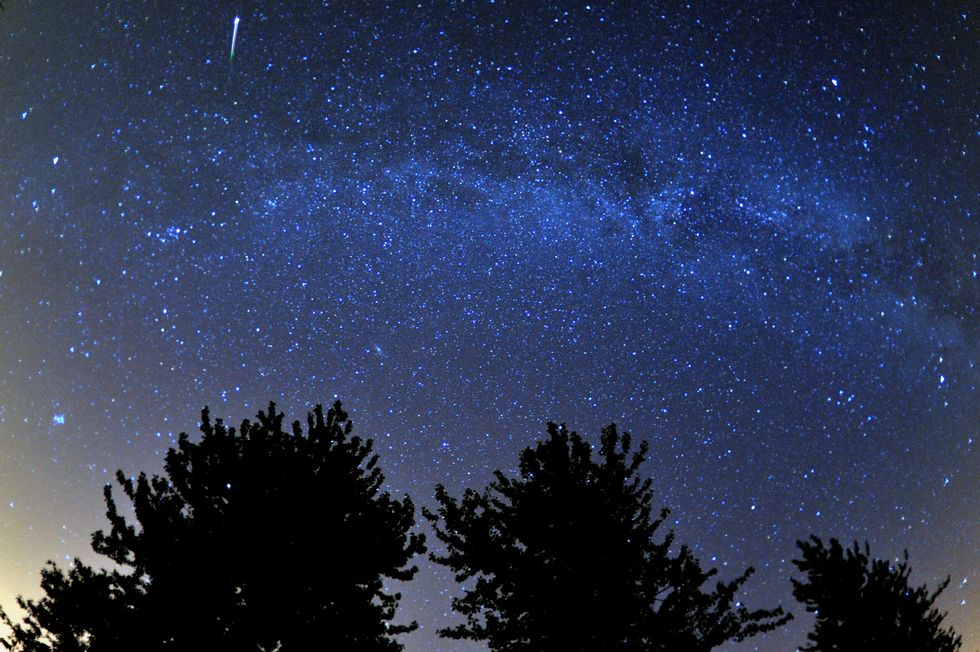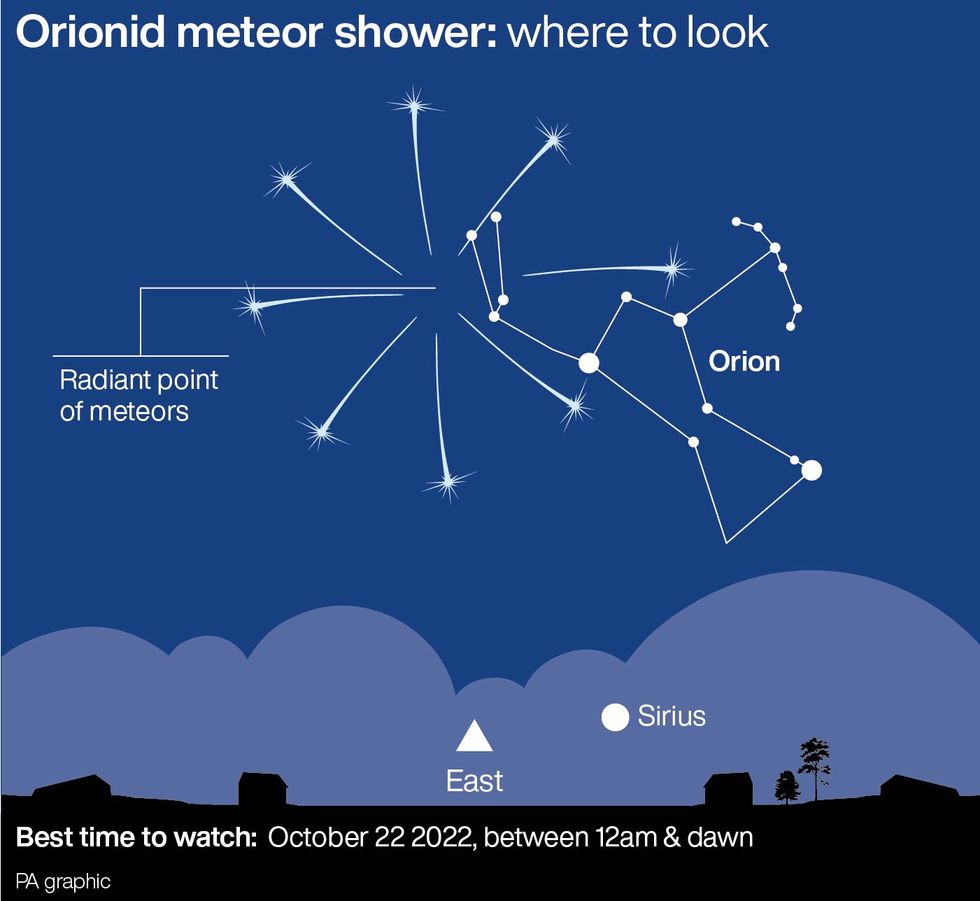
Skygazers are set for some celestial fireworks as Earth passes through the debris left by Halley’s Comet.
The Orionid meteor is active throughout October but is expected to peak on Friday night, producing up to 25 meteors every hour, and remaining visible until the early hours of Saturday.
The phenomenon gets its name from the Orion constellation – which is one of the brightest groups of stars in the sky.
Jake Foster, a public astronomy officer at the Royal Observatory in Greenwich, told the PA news agency: “One of the things that makes this meteor shower extra special for some is that each meteor is a tiny piece of Halley’s Comet.”
Meteoroids from Halley’s Comet strike the Earth’s atmosphere at a speed of 148,000mph, burning up in streaking flashes of light.

As both the Earth and Halley’s Comet have elliptical orbits around the Sun, the two intersect twice every year, causing not only the Orionids but also the Eta Aquariid meteor shower in May.
The Orionids will be visible in both northern and southern hemispheres until November 7.
Mr Foster told PA: “This year the Orionids will peak on the night of October 21 between midnight and dawn, with a maximum of 25 shooting stars per hour.
“The shower will be emanating from the constellation of Orion, which will rise from the south-eastern horizon shortly before midnight.”
Skygazers are advised to get as far away from all artificial lights as possible and allow some time for eyes to adjust to the dark.
Mr Foster told PA: “You won’t need any kind of specialist viewing equipment to see the meteor shower, just clear skies and warm clothes.”













